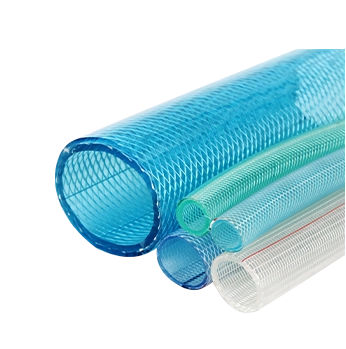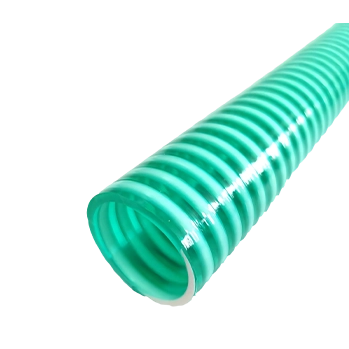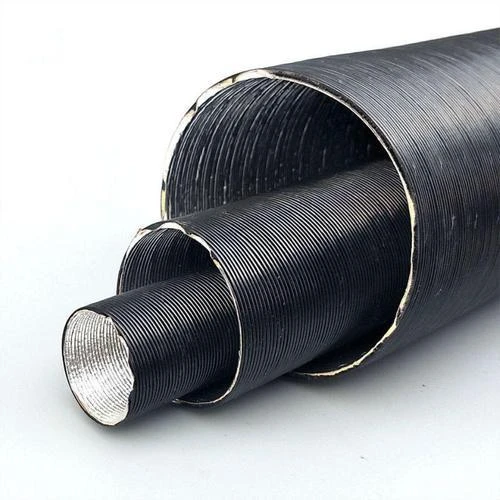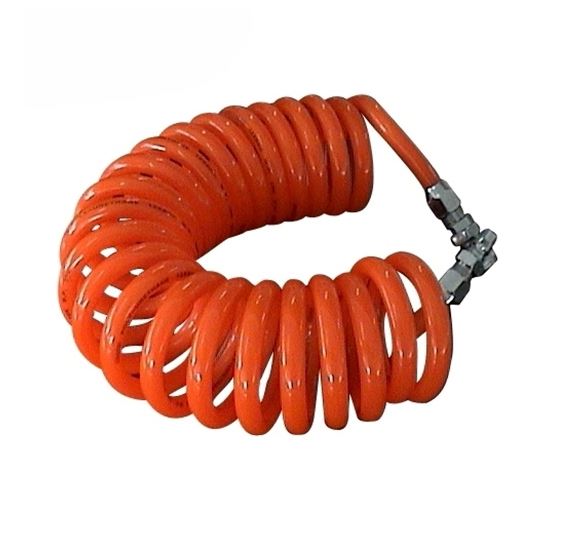Flexible Aluminium Foil Duct for Efficient Air Ventilation
Understanding Aluminium Foil Ducting: An Essential Component in Modern HVAC Systems
In the intricate world of heating, ventilation, and air conditioning (HVAC) systems, the choice of ductwork materials is paramount to system efficiency, longevity, and operational safety. Among the myriad options, aluminium foil duct stands out as a versatile and widely adopted solution. This article delves into the technical aspects, application scenarios, and strategic considerations for B2B professionals evaluating this critical component.
The demand for flexible, lightweight, and corrosion-resistant ducting has driven significant innovation, positioning aluminum foil duct hose as a preferred choice across various industrial and commercial sectors. Its unique combination of material properties and manufacturing versatility makes it indispensable for applications requiring effective air transfer, fume extraction, and thermal management.
Industry Trends and Market Dynamics for Flexible Aluminium Duct
The global market for flexible ducting, including the substantial segment of aluminium foil duct, is experiencing steady growth, propelled by several key factors. Urbanization, industrial expansion, and increasingly stringent building codes demanding enhanced indoor air quality and energy efficiency are primary drivers. According to recent market analysis, the HVAC sector's growth directly correlates with the demand for advanced ducting solutions. Innovations in material science are leading to products with improved fire resistance, greater thermal insulation properties, and enhanced durability, further solidifying the position of specialized aluminium foil ducting.
Key trends include:
- Sustainability Focus: Growing emphasis on recyclable materials and manufacturing processes with lower environmental impact. Aluminum's inherent recyclability makes it a strong contender.
- Energy Efficiency: Development of flexible aluminum foil duct with improved thermal insulation properties to minimize energy loss in HVAC systems, aligning with global energy conservation efforts.
- Pre-fabricated Solutions: Increased adoption of pre-cut and pre-assembled duct sections to reduce on-site installation time and labor costs.
- Smart Building Integration: Compatibility with advanced building management systems (BMS) for optimized airflow and climate control.
- Enhanced Safety Standards: Continuous evolution of fire safety standards (e.g., UL 181, EN 13501) driving the development of ducts with superior flame and smoke resistance.

Figure 1: Typical flexible aluminium foil duct installation.
Manufacturing Process Flow of Aluminium Foil Duct
The production of a high-quality flexible aluminium foil duct involves a sophisticated multi-stage process designed to ensure durability, flexibility, and performance. Understanding this process is crucial for assessing product quality and suitability for specific applications.
Materials and Components:
- Aluminium Foil: Typically multi-layered, reinforced with polyester or other durable films for tear resistance and vapor barrier properties. Common alloy grades like 1100 or 1235 are used for their ductility and corrosion resistance.
- Steel Wire Helix: High-tensile spring steel wire, often galvanized for corrosion resistance, forms the structural skeleton of the duct. This provides radial strength and maintains the duct's shape.
- Adhesive/Sealant: High-temperature resistant, low-VOC (Volatile Organic Compound) adhesives are used to bond the layers of foil and secure them to the steel helix.
Detailed Manufacturing Steps:
- Foil Lamination: Multiple layers of aluminum foil and often a polyester film are laminated together using specialized adhesives. This creates a robust, airtight, and often fire-retardant composite material. The lamination process enhances the material's tensile strength and puncture resistance.
- Helix Forming: A continuous length of high-tensile steel wire is precisely wound into a helix shape using automated machinery. The pitch and diameter of the helix are critical for determining the duct's flexibility and crush resistance.
- Duct Forming and Wrapping: The laminated foil material is fed onto the rotating steel helix. As the helix rotates, the foil is spirally wrapped around it, and the edges of the foil are crimped or welded together, often using heat and pressure, to create a continuous, sealed tube. The tension during wrapping is carefully controlled to ensure uniform wall thickness and flexibility.
- Curing and Setting: After forming, the duct may undergo a curing process to fully set the adhesives, ensuring maximum bond strength and airtightness.
- Cutting and Packaging: The continuous duct is then cut to specified lengths and compressed for efficient packaging and transport.
Testing Standards and Quality Assurance:
Stringent testing protocols are applied at various stages to ensure product quality and compliance. These include:
- Air Leakage Tests: Conforming to standards like EN 12237 or SMACNA for ductwork air tightness.
- Fire Resistance: Adherence to UL 181 (Standard for Factory-Made Air Ducts and Connectors) or EN 13501-1 classifications for non-combustibility and flame spread.
- Tensile Strength and Puncture Resistance: Evaluating the durability of the laminated foil.
- Crush Resistance and Flexibility: Assessing the structural integrity of the steel helix and the overall duct's ability to maintain its shape under stress.
- Temperature Cycling Tests: Ensuring performance stability across specified operating temperature ranges.
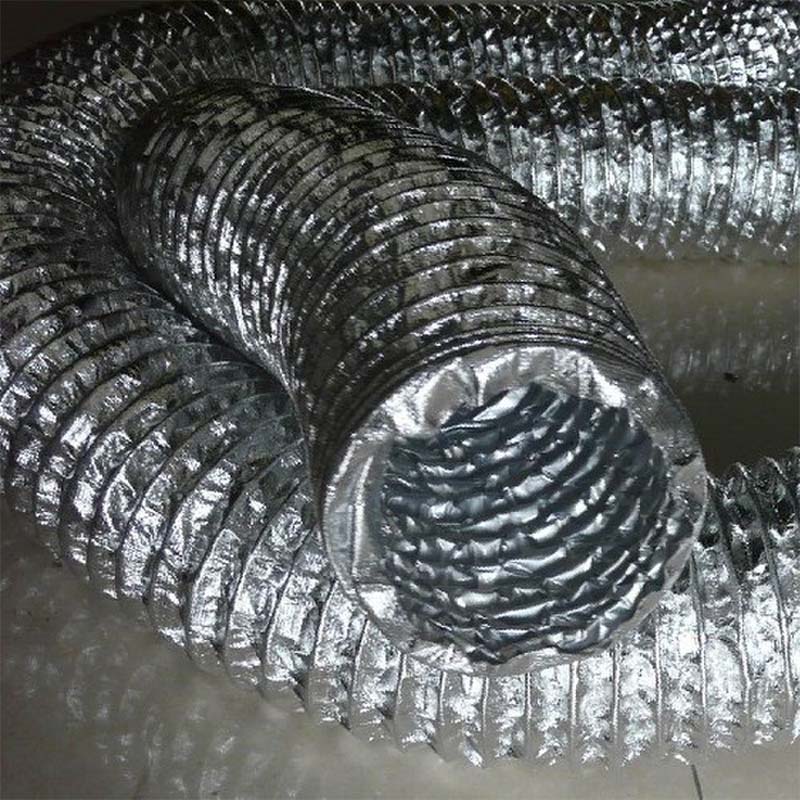
Figure 2: Illustrative view of flexible duct construction.
Technical Specifications and Performance Parameters
The performance of an aluminium foil duct is defined by a range of technical specifications that are critical for engineers and procurement specialists. These parameters dictate suitability for specific environments and operational demands.
Product Specification Table: ALUMINUM FOIL VENTILATION DUCT
| Parameter | Specification | Standard/Notes |
|---|---|---|
| Material Composition | Multi-layered aluminum foil + Polyester film reinforcement + High-tensile steel wire helix | Designed for durability and flexibility |
| Diameter Range | 80 mm to 600 mm (3.15" to 23.6") | Custom sizes available upon request |
| Temperature Range | -30°C to +140°C (-22°F to +284°F) | Operating temperature, intermittent exposure up to 150°C |
| Maximum Operating Pressure | 3000 Pa (12 inches water gauge) | Suitable for most low to medium pressure HVAC systems |
| Air Velocity | Max. 30 m/s (6000 FPM) | Ensures minimal pressure drop |
| Fire Resistance | Non-flammable, self-extinguishing | Complies with UL 181 (Class 1) / EN 13501-1 (Class A2) |
| Corrosion Resistance | Excellent against most common chemicals and moisture | Aluminium's inherent properties |
| Standard Lengths | 10 meters (33 feet) compressed | Available in various expanded lengths |
These specifications highlight the robust design and engineering behind high-performance flexible aluminum foil duct. The ability to withstand broad temperature ranges and maintain integrity under varying pressures makes it suitable for diverse industrial and commercial applications.

Figure 3: Detailed view of a flexible aluminum foil duct end.
Application Scenarios and Target Industries
The versatility of aluminium foil duct makes it an ideal solution across a multitude of industries and specific application needs. Its adaptability to tight spaces and irregular configurations is particularly advantageous.
Typical Application Areas:
- Residential HVAC: Connecting supply and return air vents to main duct lines, especially in confined attic or crawl spaces.
- Commercial HVAC: Branch ducts for offices, retail spaces, and public buildings, providing flexibility for layout changes and specialized zone control.
- Industrial Ventilation: Fume extraction from welding stations, chemical processing areas, and machine shops where corrosive fumes or high temperatures might be present.
- Kitchen & Bathroom Exhaust: Venting hot, moist, and grease-laden air from range hoods and bathroom fans to the exterior.
- Dryer Venting: Due to its smooth interior and flame resistance, it is a safe and efficient choice for clothes dryer exhaust.
- Specialty Applications: Laboratories (fume hoods), data centers (spot cooling), and agricultural settings (controlled environment ventilation).
Target Industries:
- Construction & Building Services: HVAC system installation in new builds and renovations.
- Manufacturing: Local exhaust ventilation, machinery cooling.
- Food & Beverage: Ventilation in commercial kitchens, bakeries, and processing plants (where permitted by specific food contact regulations).
- Chemical & Petrochemical: Fume and dust extraction in non-aggressive chemical environments.
- Metallurgy: Exhausting heat and light fumes from certain processes.
- Water Supply & Drainage: Ventilation in pump stations or treatment facilities.
- Automotive: Garage exhaust systems and paint booth ventilation.

Figure 4: Aluminium foil duct integrated into a complex ventilation system.
Technical Advantages and Performance Benefits
The widespread adoption of flexible aluminium foil duct is attributed to a compelling set of technical advantages that translate into significant operational and cost benefits for businesses.
- Exceptional Flexibility: The helical wire construction allows for tight bends and turns without significant loss of cross-sectional area, making installation easier in constrained spaces and reducing the need for costly rigid fittings. This inherent flexibility reduces material waste and labor time.
- Lightweight Design: Compared to rigid metal ductwork, aluminium foil ducting is significantly lighter, simplifying handling, transport, and installation, and reducing structural load on buildings.
- Corrosion Resistance: Aluminum naturally forms a protective oxide layer, providing excellent resistance to rust and many common corrosive agents found in industrial and residential environments. This extends service life, especially in humid or mildly corrosive atmospheres.
- Fire Safety: High-quality aluminium foil ducting meets stringent fire resistance standards (e.g., UL 181 Class 1, EN 13501-1 Class A2), providing a crucial safety feature by being non-combustible and self-extinguishing.
- Energy Efficiency: The smooth interior surface of well-installed flexible aluminum foil duct minimizes air friction, reducing pressure drop and allowing HVAC systems to operate more efficiently, thus lowering energy consumption. Insulated variants further enhance thermal performance.
- Ease of Installation: Its flexibility and light weight allow for quicker installation, often requiring fewer connections and hangers than rigid ductwork. This directly translates to reduced labor costs and project timelines.
- Versatility: Compatible with various connection types and suitable for a broad range of temperatures and pressures, making it adaptable to diverse system requirements.
- Cost-Effectiveness: Lower material costs, reduced installation labor, and long service life contribute to a favorable total cost of ownership.

Figure 5: High flexibility of an aluminium foil duct for complex routing.
Vendor Comparison and Selection Criteria
Selecting the right vendor for flexible aluminium foil duct is crucial for ensuring product quality, reliability, and project success. B2B decision-makers should consider a range of factors beyond just price.
Key Vendor Selection Criteria:
- Certifications and Compliance: Ensure products meet international standards (ISO 9001 for quality management, UL 181, EN 13501 for fire safety, RoHS compliance).
- Product Range and Customization: Ability to supply various diameters, lengths, and specialized features (e.g., insulated, anti-static, antimicrobial coatings).
- Technical Support and Expertise: Availability of engineering support, data sheets, and installation guidance.
- Lead Time and Logistics: Vendor's capacity to meet demand, maintain consistent lead times, and manage efficient global or regional logistics.
- Quality Control: Robust internal QC processes and verifiable test reports.
- Reputation and References: Customer testimonials, case studies, and industry reputation.
- Warranty and After-Sales Service: Clear warranty terms and responsive customer support.
Comparative Analysis Table: Flexible Ducting Options
| Feature | Aluminium Foil Duct (Multi-layer) | PVC Flexible Duct | Semi-Rigid Aluminum Duct |
|---|---|---|---|
| Material | Aluminum foil, Polyester, Steel wire | PVC film, Steel wire | Corrugated Aluminum |
| Temperature Range | -30°C to +140°C | -5°C to +70°C | -70°C to +250°C |
| Flexibility | Excellent, retains shape well | Good, can sag over time | Moderate, maintains bends |
| Fire Resistance | High (UL 181 Class 1, EN A2) | Low (often self-extinguishing but can burn) | Very High (non-combustible) |
| Corrosion Resistance | Excellent | Good against chemicals | Excellent |
| Applications | General HVAC, exhaust, light industrial | Low-temp ventilation, dust collection | High-temp exhaust, heavy duty applications |
This comparison illustrates that while other flexible ducting options exist, multi-layered aluminium foil duct often provides the best balance of temperature resistance, flexibility, and fire safety for general HVAC and medium-duty industrial applications.
Customized Solutions for Specific Project Requirements
Recognizing that no two projects are identical, leading manufacturers of flexible aluminium foil duct offer comprehensive customized solutions. This enables precise matching of product specifications to unique operational demands.
Customization options typically include:
- Diameter and Length: Production of specific diameters outside standard ranges, or pre-cut lengths to minimize on-site waste.
- Reinforcement Levels: Varying the gauge of the steel wire helix or the number of foil/polyester layers for enhanced crush resistance, tensile strength, or thermal insulation.
- Specialized Coatings: Application of antimicrobial coatings for hygiene-sensitive environments (e.g., healthcare, cleanrooms) or anti-static coatings for explosive atmospheres.
- Insulated Variants: Integration of fiberglass or polyester insulation layers to prevent condensation and reduce thermal losses, significantly improving energy efficiency in cold or hot air transfer applications.
- Specific Fire Ratings: Development of ducts to meet more stringent local or industry-specific fire safety classifications.
Our engineering team collaborates closely with clients to define project parameters, conduct feasibility studies, and deliver tailored aluminium foil duct solutions that optimize performance and cost-efficiency.
Application Case Studies and Customer Success
Real-world applications demonstrate the practical advantages and reliability of high-quality aluminium foil duct. Here are a few examples showcasing its effectiveness:
Case Study 1: Commercial Office Building HVAC Renovation
- Challenge: An existing commercial office building in a dense urban area required an HVAC system upgrade. The old rigid ductwork was cumbersome to remove and replace due to limited ceiling space, numerous structural obstacles, and the need to maintain office operations during installation.
- Solution: The contractor opted for flexible aluminum foil duct for the branch lines and connections to diffusers. Its ability to bend around existing pipes and beams, combined with its lightweight nature, allowed for significantly faster installation without major structural modifications.
- Outcome: Installation time was reduced by 30% compared to estimates for rigid ductwork. The improved airflow and reduced pressure drops resulted in a 10% energy saving for the HVAC system post-renovation. Client feedback highlighted the minimal disruption to daily operations and the efficient completion.
Case Study 2: Industrial Fume Extraction in a Metal Fabrication Plant
- Challenge: A metal fabrication plant needed to improve local fume extraction at multiple welding stations. The existing system struggled with adaptability when workstation layouts changed, and the ducting was susceptible to minor damage from sparks.
- Solution: Reinforced aluminium foil duct with enhanced fire-retardant properties was installed for localized exhaust. Its flexibility allowed precise positioning of extraction hoods and easy re-routing when the floor plan changed.
- Outcome: Workers reported a noticeable improvement in air quality. The durability of the reinforced duct held up against the industrial environment, and its high-temperature rating provided peace of mind against accidental spark exposure. Maintenance costs for duct repairs were significantly reduced.

Figure 6: Aluminium foil duct in a practical exhaust application.
Frequently Asked Questions (FAQ)
- Q: What is the typical service life of an aluminium foil duct?
- A: With proper installation and in environments within its specified temperature and pressure ranges, a high-quality aluminium foil duct can have a service life of 10-15 years, often matching the lifespan of the HVAC system itself. Regular inspection is recommended to identify any wear or damage.
- Q: Is aluminium foil duct suitable for outdoor use?
- A: While the aluminum foil provides excellent corrosion resistance, prolonged direct exposure to UV radiation and harsh weather conditions can degrade the polyester film and adhesives over time. For outdoor applications, it is generally recommended to use insulated and UV-stabilized versions or ensure the duct is protected within a weatherproof enclosure.
- Q: Can this duct be used for corrosive chemical fumes?
- A: Standard aluminium foil duct is resistant to many common non-aggressive fumes. However, for highly corrosive chemical fumes, specialized ducting made from materials like PVC, polypropylene, or stainless steel is usually recommended. Always consult the chemical compatibility chart or a technical specialist for specific chemical exposure scenarios.
- Q: How does its fire rating compare to other duct materials?
- A: High-quality aluminium foil ducting typically achieves a UL 181 Class 1 rating (for North America) or an A2 classification according to EN 13501-1 (for Europe), indicating excellent fire and smoke safety characteristics, including low flame spread and smoke development. This is superior to many plastic or fabric-based flexible ducts.
Logistics, Warranty, and Customer Support
Lead Time and Fulfillment:
We maintain a robust inventory of standard aluminium foil duct products to ensure rapid dispatch, typically within 2-5 business days for in-stock items. For large volume orders or customized solutions, lead times are quoted on a project-specific basis, considering material availability and production schedules, usually ranging from 2-4 weeks. We partner with reliable logistics providers to offer both domestic and international shipping options, focusing on efficient and timely delivery to minimize project delays for our B2B clients. Express shipping is also available upon request.
Warranty Commitments:
All our ALUMINUM FOIL VENTILATION DUCT products are backed by a comprehensive 2-year manufacturer's warranty against defects in material and workmanship, starting from the date of purchase. This warranty underscores our commitment to quality and gives our clients confidence in the long-term performance of our products. Detailed warranty terms and conditions are available upon request and accompany all product deliveries.
Dedicated Customer Support:
Our commitment extends beyond product delivery. We provide expert pre-sales consultation to assist with product selection, technical specifications, and customized solutions. Post-sales support includes technical assistance for installation queries, troubleshooting, and prompt handling of any warranty claims. Our dedicated team of specialists is available via phone, email, and live chat during business hours to ensure continuous operational excellence for our partners.
References
- ASHRAE Handbook—HVAC Systems and Equipment. (2020). American Society of Heating, Refrigerating and Air-Conditioning Engineers.
- Underwriters Laboratories Inc. UL 181: Standard for Factory-Made Air Ducts and Air Connectors. (2021). Northbrook, IL: UL Standards.
- European Standard EN 13501-1: Fire classification of construction products and building elements - Part 1: Classification using data from reaction to fire tests. (2018). European Committee for Standardization.
- SMACNA HVAC Duct Construction Standards – Metal and Flexible. (2018). Sheet Metal and Air Conditioning Contractors’ National Association.
-
PVC Suction Hoses: Flexible, Durable Fluid Transfer SolutionsNewsAug.28,2025
-
Advanced Corrugated Pvc Hose Technology for Modern Industrial NeedsNewsAug.22,2025
-
Premium Fire Water Hose Solutions for Global IndustriesNewsAug.22,2025
-
Industrial Suppliers Guide to Premium Double Welding Hose SolutionsNewsAug.22,2025
-
Premium PU Pneumatic Hose Solutions for Industrial ApplicationsNewsAug.22,2025
-
Wholesale PVC Garden Hose China Solutions for Global BuyersNewsAug.22,2025



